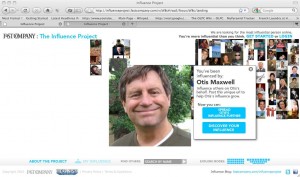Today’s Wall Street Journal had a nice anecdote from a gathering of retired American Airline employees. A flight attendant remembered a flight where there were 125 Kosher meals on board and only 50 people said they’d ordered Kosher meals. With a normal meal service, they’d run out of options and everybody in the back of the plane would get a Kosher meal whether they ordered it or not.
Solution: the crew announced that American was testing a special menu and the first 50 people to press their call buttons would get to try it. The meals sold out quickly. The Kosher labels were stripped of and what might have been a “I didn’t ask for that” complaint turned into an anticipated treat. All because of the right positioning.
I’m old enough to remember the days of meal service on airplanes, how about you? I also remember the frequent flyer’s trick of always ordering a special meal (Kosher was good, as was the fruit plate, but I always went for the seafood plate if available) on the premise that if it was custom-prepared it would be better (not always true).
Do you have a favorite recollection from the “golden age of flying”? Let’s get together at DMA 2013 next week in Chicago and compare notes. I’m leading a panel on Wednesday the 16th at 10 am with Dawn Wolfe of Autodesk and Philip Reynolds of Palio+Ignite. It’s all about positioning, what else? Come see us!
